

H0me page history
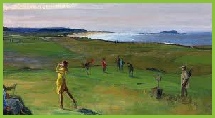
Golf course evolution
The Mashie Niblick was not a wedge.
The traditional set of irons was invented by Archibald Barrie and were used from 1903 up until about the 1940s. The introduction of the standardized numbered iron set produced by the Spalding Sporting Goods Company in the early 1930s caused the traditional set of irons to gradually give way to numbered convention.
The traditional irons varied greatly in loft (+/- 5 degrees). The shape of the head determined some of the playing characteristics of the club; most traditional heads were roughly egg-shaped.
Sabbath sticks
Sunday or Sabbath sticks were the golf enthusiasts' answer to the Church of Scotland's discouraging golfing on Sundays. Clubs were disguised as walking sticks, the club head comfortably fitting in the palm of the golfer's hand, until feeling unobserved, the stick was reversed and a few strokes were played.
Equipment development
The evolution of golf can be explained by the development of the equipment used to play the game. Some of the most notable advancements in the game of golf have come from the development of the golf ball. The golf ball took on many different forms before the 1930s when the United States Golf Association (USGA) set standards for weight and size. These standards were later followed by a USGA regulation stating that the initial velocity of any golf ball cannot exceed 250 feet per second. Since this time, the golf ball has continued to develop and impact the way the game is played.
Another notable factor in the evolution of golf has been the development of golf clubs. The earliest golf clubs were made of wood that was readily available in the area. Over the years, Hickory developed into the standard wood used for shafts and American Persimmon became the choice of wood for the club head due to its hardness and strength. As the golf ball developed and became more durable with the introduction of the “gutty” around 1850, the club head was also allowed to develop, and a variety of iron headed clubs entered the game. The introduction of steel shafts began in the late 1890s, but their adoption by the governing bodies of golf was slow. In the early 1970s, shaft technology shifted again with the use of graphite for its lightweight and strength characteristics.
The first metal “wood” was developed in the early 1980s, and metal eventually completely replaced wood due to its strength and versatility. The latest golf club technology employs the use of graphite shafts and lightweight titanium heads, which allows the club head to be made much larger than previously possible. The strength of these modern materials also allows the face of the club to be much thinner, which increases the spring-like effect of the club face on the ball, theoretically increasing the distance the ball travels. The USGA has recently limited the spring-like effect, also known as the Coefficient of Restitution (COR) to .83 and the maximum club head size to 460cc in an attempt to maintain the challenge of the game.
Obsolete golf clubs
Early golf clubs were all made of wood. They were hand-crafted, often by the players themselves, and had no standard shape or form. As the sport of golf developed, a standard set of clubs began to take shape, with different clubs being fashioned to perform different tasks and hit various types of shot. Later, as more malleable iron became widely used for shorter range clubs, an even wider variety of clubs became available.
Woods
They were:
-Play Club: Driver
-- Brassie: 2-Wood
- Spoon: Higher-Lofted Wood
-Baffing Spoon: Approach Wood
These were made of wood and were used until being replaced by the numbered system used today.
Irons
They were:
Irons
They were:
- Cleek: 2 Iron
-Mid Mashie: 3 Iron
-Mashie Iron: 4 Iron
-Mashie: 5 Iron
- Spade Mashie: 6 Iron
- Mashie Niblick: 7 Iron
- Pitching Niblick: 8 Iron
- Niblick: 9 Iron
- Jigger: Very low lofted iron, shortened shaft

Golf origins


Equipment development

Golf clubs components
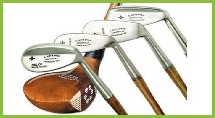
Golf set
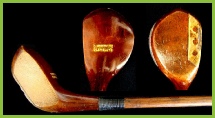
Golf woods
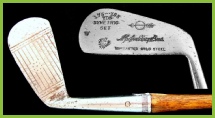
Long and mid irons
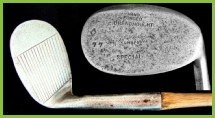

Golf putter
Short irons and wedges
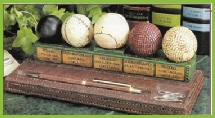
Golf balls
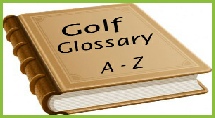
Glossary